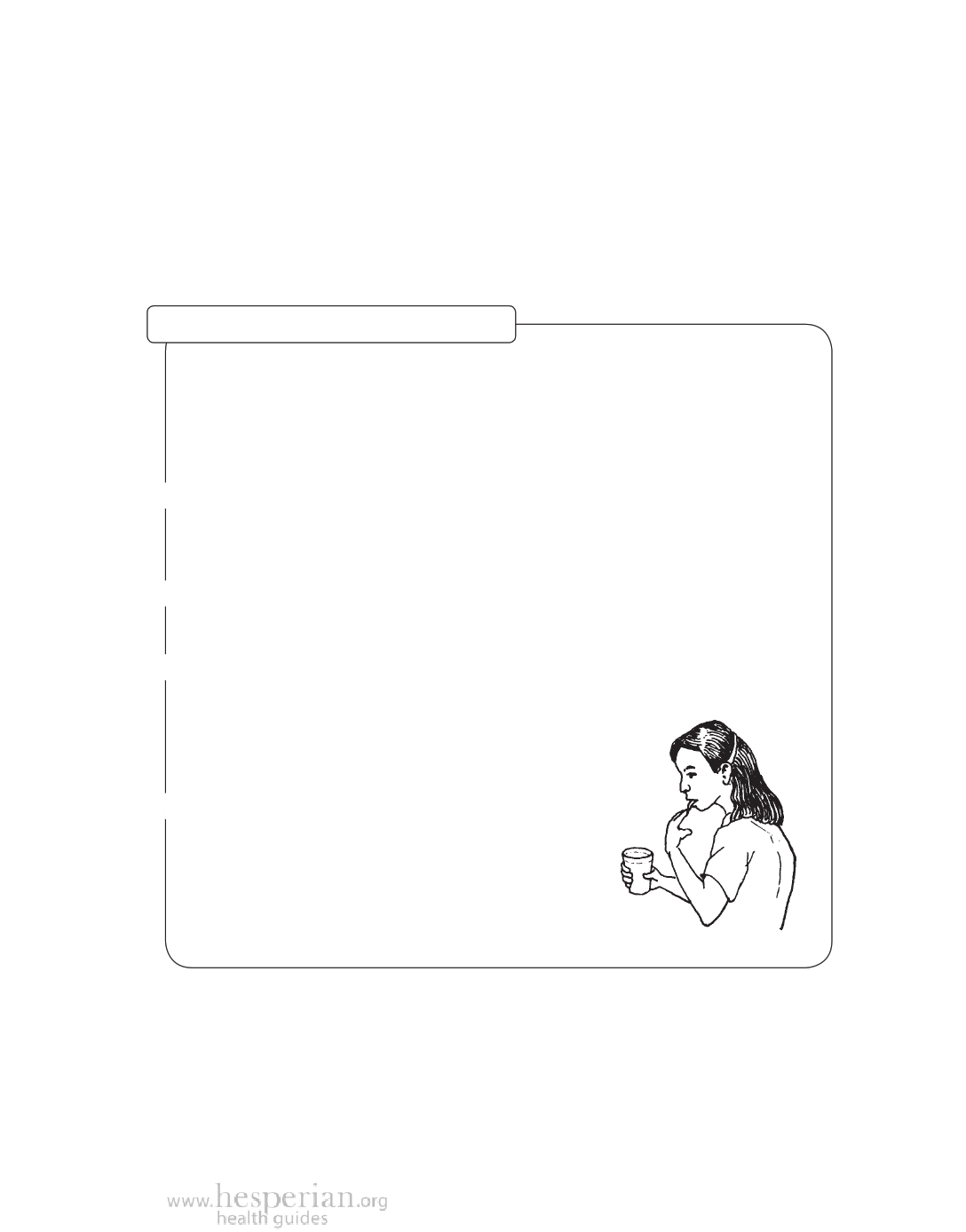
Raise Community Awareness
69
Is your water safe?
It is difficult to know if water is safe or not. Some things that cause health
problems are easily noticed by looking at, smelling, or tasting the water. Others
can be found only by testing the water. Understanding what makes water
unsafe and taking steps to protect water from contamination prevents many
health problems (see Chapter 5.)
Cleabrcwnbaxtnecrbmight not be clean water
This activity shows how there may be something harmful in the water even if it
cannot be seen, smelled, or tasted.
Time: 15 to 30 minutes
Materials: 4 clear bottles, mud, salt, sugar, treated water
➊ Before the activity, fill 4 clear bottles with water that has been boiled, treated with
chlorine, or had some other treatment to make it safe. To one bottle, add a spoonful
of mud. To another, add a spoonful of sugar. To a 3rd, add a spoonful of salt. Shake
the bottles well. Add nothing to the last bottle. Bring these bottles to the group.
➋ Ask people in the group to smell the water in all the bottles. Then invite them to
drink water from any of the bottles. Most likely no one will drink the muddy water,
but many will drink from the other bottles.
➌ After several people have drunk the water, ask them why they did not drink from the
muddy water bottle. Then ask what their water tasted like, and what did they think
was in it. Did anyone drink the water with nothing
added to it? Ask them how they knew it was just water,
and did not contain something they could not see,
smell, or taste.
➍ Begin a discussion about things that may be in your
water that make it unsafe to drink. This could include
germs that cause diarrhea, blood flukes that cause
schistosomiasis, and pesticides or other chemicals.
Are there reasons to believe these things may be in
your water? Are there other ways besides looking and
smelling to know if water is safe or unsafe?
A Community Guide to Environmental Health 2012